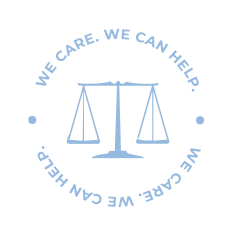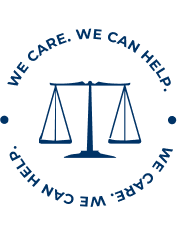Sudden deceleration or acceleration, rapid changes in direction, blunt force trauma and forward momentum can all cause the human body to experience extreme force during a car crash. Unfortunately, in more severe crashes, our bones may not be strong enough to handle these forces. As a result, car crash victims may suffer fractures and the burdens that come along with these type of injuries.
Common car crash fractures
A fracture is a medical term for a broken bone. Fractures occur when the physical force applied on the bone is stronger than the bone itself. Common car crash fractures include the following:
Tibia/Fibula fractures
These bones run parallel through the lower leg and are strong and flexible. Although they absorb the repeated impact of walking, running and jumping, they are likely to crack or splinter in a crash where enough force is applied. For example, tibia and fibula fractures may occur in a wreck where the car crumples.
Femur fractures
Despite being one of the strongest bones in the body, the femur located in the thigh is not immune from breakage in a high-speed collision. There are dangers in femur fractures if damage occurs to the ends that are connected to the knee or hip. These fragile areas are prone to damage from bone chips, cartilage damage or arthritis, all of which can worsen by the trauma of a car crash.
Rib fractures
Rib fractures are common injuries in car collisions. The injury risk lies if the victim’s chest is thrown hard against a seatbelt or if a rapidly expanding airbag hits them. These fractures are difficult to treat because there is no way to apply a cast to the ribcage without causing breathing restrictions to the patient. If a sliver of bone from a cracked rib penetrates a lung, emergency surgery and a lengthy recovery are in the patient’s future.
Hip fractures
According to some doctors, hip fractures are the most common car crash fractures. Hip fractures are devastating injuries that can prevent a patient from standing and walking for some time. In addition, they may continue to cause pain even after years after the car crash.
Pelvic fractures
Pelvic fractures are more frequent in motorcycle collisions, but they also occur in car crashes. Comparable to hip fractures, pelvic fractures are likely to prevent the patient from standing or walking for an extended amount of time.
Facial fractures
The delicate bones on the face can easily shatter in a car collision. The cheekbones, the jaw, the nasal bone and nose cartilage are all vulnerable during a car crash to an airbag and flying objects.
Skull fractures
Another reason to always wear a seat belt! Skull fractures can occur if a person strikes the windshield because they weren’t buckled up.
Wrist fractures
The human wrist is composed of many small, fragile bones, so it’s no surprise that they can be easily dislocated or fractured during a car crash. This is common in individuals who braced themselves against the steering wheel or dashboard just before impact.
Arm fractures
Similar to wrist fractures, arm fractures can occur as a person attempts to brace for the collision. When the crash happens, the force of the impact transmits up the bones of the arm. The bone that runs through the upper arm called the humorous and the bones that run side by side through the lower arm called the radius and ulna are the three major bones in the arm vulnerable to fractures.
Spine fractures
An estimated 700,000 spinal fractures occur each year. Spinal fractures occur when the vertebrae in the neck or back break and collapse. These injuries are dangerous because a fracture of a vertebra can cause the bone fragments to pinch and damage the spinal nerves or spinal cord. Spine fractures can lead to paralysis and other serious injuries.
Clavicle fractures
One of the most fragile bones in the human body is the long horizontal bone that runs across the top of the ribcage known as the clavicle. The length of these bones makes them susceptible to fractures. These type of fractures can make the patient’s daily life complicated. The clavicle is essential to the proper movement of the arm and shoulders and when injured, the patient may struggle with basic tasks such as putting on clothes and even typing.
Complications after a fracture
A medical professional will evaluate your injuries after you have been involved in a car collision. If you sustained a fracture, many times, a cast and pain medication will be sufficient for recovery. However, in some situations, even after the prompt and appropriate medical attention, fractures may result in serious and permanently debilitating complications.
For example, some broken bones result in repeated surgeries, nerve damage and even amputation of the affected limb. In situations where the fracture heals improperly, the bone may need to be re-broken and reset. Furthermore, fractures with protruding bones leave the patient susceptible to infections. Our bodies are not meant to be open to exposure from bacteria, but compound fractures have the potential of doing just that. In many cases, those who have suffered a fracture will experience some level of ongoing pain and discomfort for years, sometimes for the rest of their lives.
How The Carlson Law Firm can help
Victims who have suffered car crash fractures due to the negligence of another may be entitled to compensation. Here at The Carlson Law Firm, we have compassionate attorneys that understand fractures have the tendency of resulting in long-term complications and a lifetime of costs.
If you or a loved one were the victim of a collision that resulted in fractures or other injuries, we want to help. The Carlson Law Firm strives to help people who have suffered injuries due to the negligence of others and have proven results since 1976. We will ensure you are in the best possible position for long-term relief. Our goal is to get you maximum compensation while you take the time to recover. Contact us today for a free case evaluation.
Find a Carlson Law Firm office near me.





